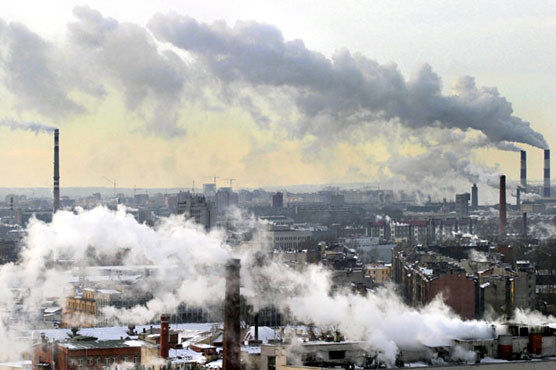Air pollution costs $2.9 trillion a year: NGO

The new figure is in line with the WHO estimates of 4.2 million deaths each year.
PARIS (AFP) – The global cost of air pollution caused by fossil fuels is $8 billion a day, or roughly 3.3 percent of the entire world’s economic output, an environmental research group said on Wednesday.
The report from the Centre for Research on Energy and Clean Air (CREA) and Greenpeace Southeast Asia is the first to assess the global cost of air pollution specifically from burning oil, gas and coal.
"We found that the China Mainland, the United States and India bear the highest costs from fossil fuel air pollution worldwide, an estimated $900 billion, $600 billion and $150 billion per year, respectively," the report said.
Particles thrown off by fossil fuel usage account for 4.5 million premature deaths each year around the globe, including 1.8 million in China and a million in India, the researchers found.
The new figure is in line with World Health Organization (WHO) estimates of 4.2 million deaths each year linked to ground-level air pollution, mostly from heart disease, stroke, lung cancer and acute respiratory infections in children.
Living in the New Delhi area of India is like smoking 10 cigarettes a day, earlier research has shown.
"Air pollution from fossil fuels is a threat to our health and our economies that takes millions of lives and costs us trillions of dollars," said Minwoo Son, clean air campaigner at Greenpeace East Asia.
The global cost for 2018 was $2.9 trillion, the report estimated.
"But this is a problem that we know how to solve: by transitioning to renewable energy sources, phasing out diesel and petrol cars, and building public transport."
The 44-page report breaks down the global burden of fossil fuel-driven air pollution -- measured in economic costs and premature deaths -- by type of pollutant and by country.
Each year the global economy takes a $350 billion hit from nitrogen dioxide (NO2) -- a byproduct of fossil fuel combustion in vehicles and power plants -- and a further $380 billion hit from ozone, according to middle-ground estimates.
Deep into the lungs
By far the most costly pollutant is microscopic fine particulate matter (PM 2.5), which accounts for more than two trillion dollars per year in damages, measured in health impacts, missed work days and years lost to premature death.
The global breakdown for premature deaths each year was 500,000 for NO2, one million for ozone, and three million for PM 2.5.
Some 40,000 children die every year before their fifth birthday due to PM 2.5, which also leads to two million preterm births annually and twice as many cases of asthma.
PM 2.5 particles penetrate deep into the lungs and enter the bloodstream, causing cardiovascular respiratory problems. In 2013, the WHO classified it as a cancer-causing agent.
Middle-range estimates of the number of premature deaths stemming from fossil fuel pollution include 398,000 for the European Union, 230,000 for the United States, 96,000 for Bangladesh, and 44,000 for Indonesia.
Among countries taking the biggest economic hit each year are China ($900 billion), the United States ($610 bn), India ($150 bn), Germany ($140 bn), Japan ($130 bn), Russia ($68 bn) and Britain ($66 bn).
Globally, air pollution accounts for 29 percent of all deaths and disease from lung cancer, 17 percent from acute lower respiratory infection, and a quarter from stroke and heart disease, according to the WHO.
Air pollution is a focal point of social discontent in some parts of the world, leading some experts to speculate that it could drive a more rapid drawdown of fossil fuel use.
"Are we approaching a tipping point where it will no longer be acceptable to shorten the lives of people with fossil fuel pollution?" Johan Rockstrom, head of the Potsdam Institute for Climate Impact Research, told AFP.
The new report used global datasets for surface-level concentrations of the three main pollutants analysed, and then calculated health and cost impacts for 2018.
Estimates of PM 2.5 and NO2 concentrations were based on Earth observation instruments on two NASA satellites that monitor aerosols in the atmosphere.
Deaths, years of life lost and years lived with disability due to PM 2.5 exposure are drawn from the Global Burden of Disease, published in 2018 by PNAS.

